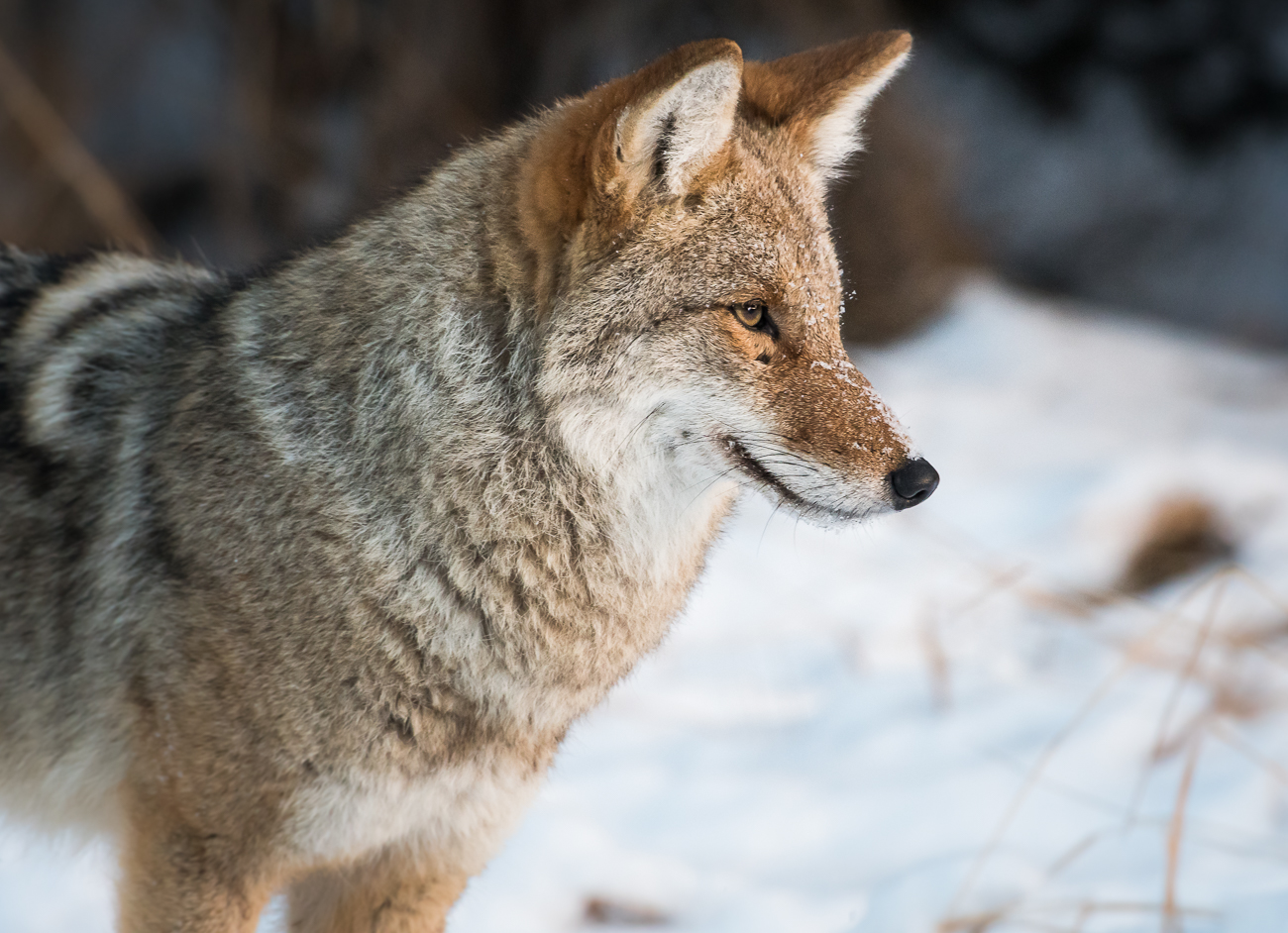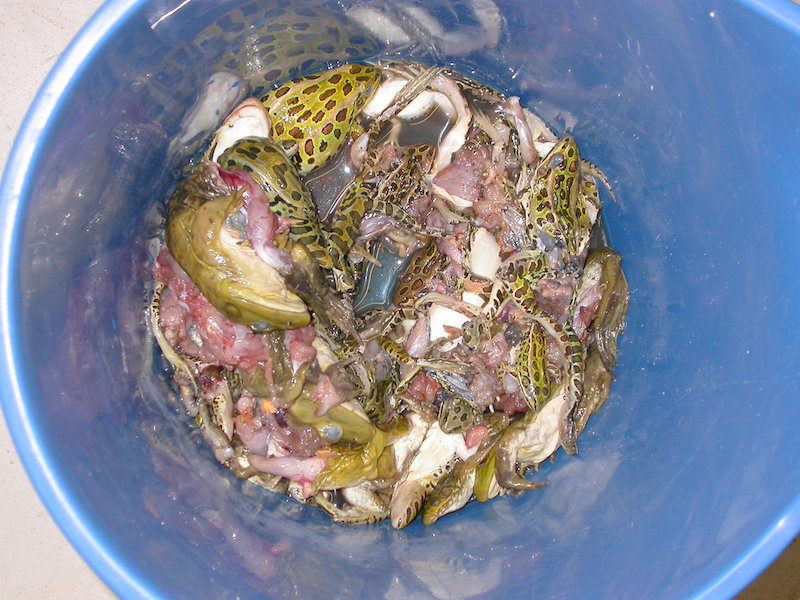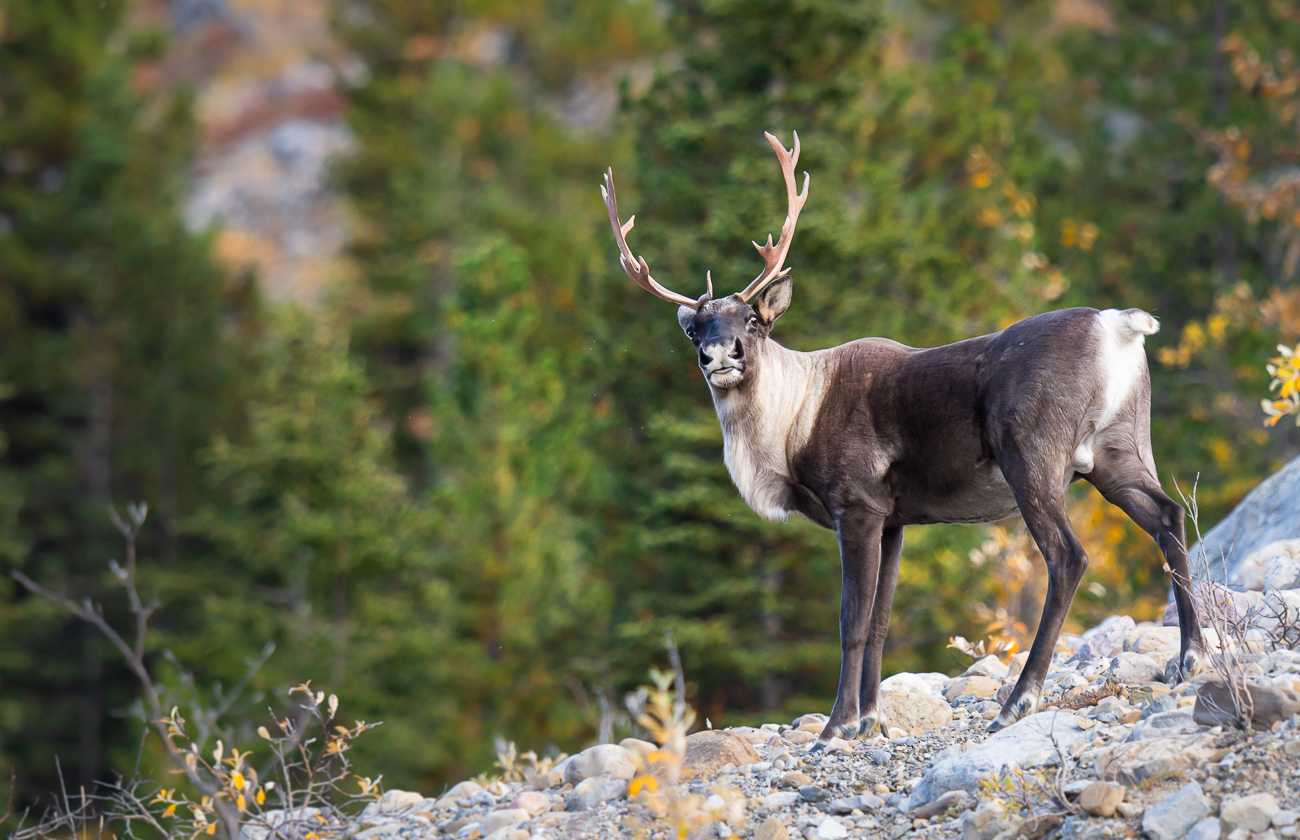We Don’t Know What We Don’t Know
Chapter Three
 Dr. Victoria Lukasik is a biologist who has studied the complexity of the question: Should we care about subspecies?
Dr. Victoria Lukasik is a biologist who has studied the complexity of the question: Should we care about subspecies?
“The main reason we need to classify things, and that it becomes an important issue, is because of things like our legislation. How can we protect a species if we don’t know what a species is? Well, there’s special protection for this subspecies or this population, but maybe this is a hybrid, so it doesn’t get protected. That’s where this stuff becomes relevant. For the most part outside of that it almost doesn’t really matter what we call it; what’s more important is (a subspecies) role in the ecosystem.”
And as Victoria reminds us, each subspecies does have a unique role in the ecosystem they call home.
“They’ve evolved over however many thousands of years in that region because it has a role in that system.”
In other words, subspecies evolve a bit differently from the larger species to better fulfill their ecosystem services in different climates and different landscapes – eco-regions, in other words. And that’s what allows different eco-regions to play their part in sustaining biodiversity globally.
Many species can claim to have genetically unique subspecies within their ranks, Victoria tells us, even if we don’t always realize it or prioritize their protection.
“19 subspecies have been described about coyotes. But for some reason, we don’t talk about that. And maybe that’s because we don’t protect coyotes. And if we did, maybe then we would care about their subspecies. Whereas for wolves or for caribou, for all these other species, it’s this big, contentious thing.”

When it comes to the caribou specifically, though the entirety of the species is threatened, it’s the mountain caribou subspecies that is of most concern – and specific populations within that subspecies are already going extinct.
 “Even though they may be the same species, if you look at southern mountain caribou and northern mountain caribou, they behave very differently. And they’ve done studies where they’ve taken northern mountain caribou and brought them into the southern mountain caribou range. It didn’t work at all because even though they’re the same species, they behave differently. That’s not usually enough to call them a separate species. But does that mean it shouldn’t get protected? I don’t think so.”
“Even though they may be the same species, if you look at southern mountain caribou and northern mountain caribou, they behave very differently. And they’ve done studies where they’ve taken northern mountain caribou and brought them into the southern mountain caribou range. It didn’t work at all because even though they’re the same species, they behave differently. That’s not usually enough to call them a separate species. But does that mean it shouldn’t get protected? I don’t think so.”
Does it matter if we lose a subspecies? The former head of Conservation Outreach at the Calgary Zoo Brian Keating says, “We know the caribou of southern BC have now disappeared forever. It is a big deal.”
Ethicist Dr. Kerry Bowman adds, “There could be cascade effects with biodiversity. We have a very high level of loss and it’s escalating very, very quickly. We don’t even know what could be triggered.”
That’s the issue. We just don’t know what we stand to lose. We don’t know how valuable – or not – a subspecies might be.
Kerry tells us, “I see it as a massive brick wall. And people are slowly removing a single brick here and a single brick there and they’re saying, ‘there is no effect whatsoever. This wall is as stable as it was before I slipped these bricks out’. How many bricks can you slide out before you get a cascade effect?”
It’s why we at least need to understand why subspecies exist so we can better determine what we might lose if one disappears.
The problem? It’s hard to measure the value of a subspecies of caribou. It’s even harder to understand the importance of variations of the lesser-lights of our biodiversity.
As Yemisi Dare explains, “Smaller creatures, because of their tiny size, can fill many more kinds of ecological spaces and perform many more functions in ecosystems than larger animals. And they are very well adapted to these varied niches.”
Yemisi is a scientist and adviser to the federal government. As she tells us, “All of this variety allows these small creatures to exploit a huge range of food types, and therefore live in a wide range of niches, even within a small physical space.”
As an example?
 “Aquatic crustaceans can be voracious carnivores or scavengers preying on even smaller creatures, while others are detritivores, eating dead stuff that’s lying around. Some catch prey swimming in water, others crawl around on the bottom substrate, others float near the surface, and yet others burrow for their food. Some species will filter water and clean it. Whales simply can’t do this. They are too big to occupy all these different strata.
“Aquatic crustaceans can be voracious carnivores or scavengers preying on even smaller creatures, while others are detritivores, eating dead stuff that’s lying around. Some catch prey swimming in water, others crawl around on the bottom substrate, others float near the surface, and yet others burrow for their food. Some species will filter water and clean it. Whales simply can’t do this. They are too big to occupy all these different strata.
Yemisi answers your inevitable question:
“But why do we care that there are so many different crustaceans with so many adaptations to feeding? Well, for one thing, many of these small crustaceans serve the very important function of nature’s garbage disposal and recycling system.
“Can you imagine what might happen if we didn’t have a waste disposal system for nature? How long do you think large creatures would survive without a cleaning system? There are so many different adaptions among these crustaceans that ensure that this vital cleaning and recycling service is done quickly and efficiently, with specially adapted mouth and body parts for tearing apart a large or small carcass that falls in the water, or chomping down bits of rotting vegetation.”
It’s why what we can’t see – what we don’t understand – can matter a great deal.
Yemisi tells us, “The challenge of valuing small sized creatures lies in the greater difficulty in observing their existence and therefore seeing their connection to anything else. If you don’t know it’s there, how can you value it? But if we reframe the way we look at the world, we see so much more!”
And Yemisi is working to reframe how we protect our biodiversity.
She’s taking a bottom-up approach, studying parasites – and how they move from host to host – in order to understand what needs to be done nationally to protect specific species and entire ecosystems.
“(Parasites) affect virtually all aspects of the lives of their hosts by influencing and manipulating behaviour, altering feeding habits and food choice, reproduction, metabolism, and the ability to fight off infection. In fact, they are vital enough that they can be used to measure how healthy a population is, or how resilient an ecosystem is. I joke with my friends that parasites have already achieved world domination, we just don’t know it.”
 In fact, by studying parasites, Yemisi began to unravel the reproduction habits of various species – including the highly endangered leopard frog. What she found?
In fact, by studying parasites, Yemisi began to unravel the reproduction habits of various species – including the highly endangered leopard frog. What she found?
“Corridors are particularly important for animals that migrate or routinely travel distances between feeding, breeding and overwintering habitats. Being able to move among these different habitats is critical for the survival of populations and high mortality during travel can significantly impact a population. Providing safe causeways for travel is not only important for large animals, but also for small animals that move among habitats.”
Or, in other words, habitat connectivity is critical to reproduction and reproduction is critical to genetic diversity.
Reproduction, of course, is how unique characteristics – the traits that help different organisms fulfill their ecosystem niches – are passed down through the generations.
Some organisms reproduce asexually. Essentially, they photocopy themselves.
Asexual organisms don’t need to worry about a mate and, better still, they can do it quickly. Which, while helpful when you need an extra set of hands (well, not hands, these organisms don’t have hands, but you get the metaphor), they lack genetic diversity. And that’s fine for plants, bacteria and certain types of worms. But a lack of genetic diversity is a big problem for organisms that reproduce sexually.
Sexual reproduction, obviously, is how humans pass forward their genes – it’s how many organisms pass-on their genetic information.
Chromosomes in specialized sex cells – sperm in males and eggs in females – join together during fertilization, creating at first a zygote and then an embryo.
That fertilized egg? It’s got those sweet Ikea-like instructions – again, with automated assembly and all the parts included – on how to produce more cells that contain the genetic material from both parents.
But if that genetic material is lacking diversity, problems occur. The organism becomes more susceptible to disease and can’t easily adapt to change – especially environmental change.
With time, broken reproductive processes and a shrinking gene pool will cause a species to go extinct.
